Morning time can mean many things to different people, but one aspect that I find consistent is that it’s an important and well-loved time of day in the homes of people who pursue it. For my family, morning time is the term we use to describe the time of day when the entire family gathers for the lessons that we do together. In recent years, morning time has actually occurred in the morning, but some years our “morning time” was in the afternoon as we took advantage of baby nap schedules. But here’s the funny part: We still called it morning time. No matter when or how we do it, the name just sticks.
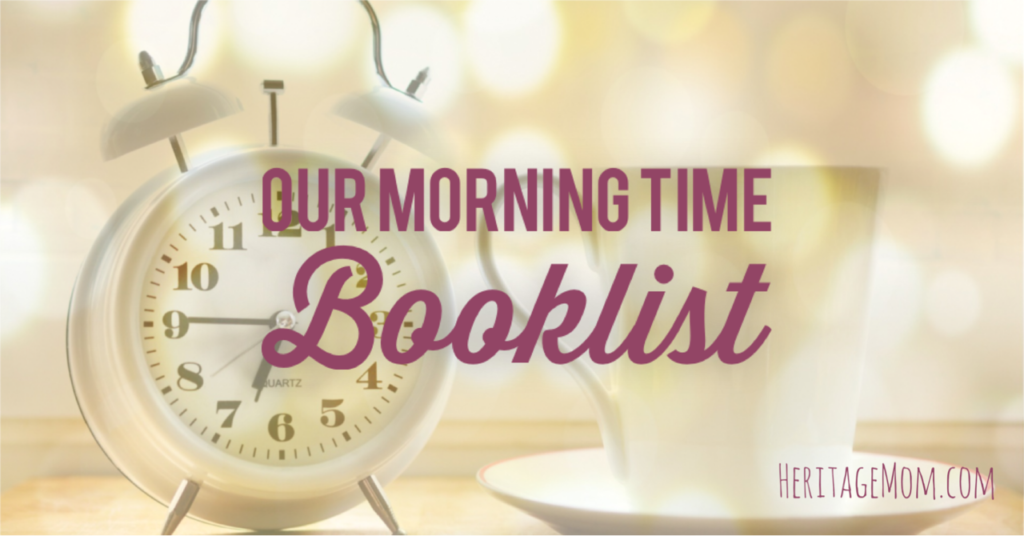
Because of how fruitful morning time has been for us, I was delighted to be included in a new book by authors Pam Barnhill of Your Morning Basket and Heather Tully. Gather: Exploring the Wonder, Wisdom, & Worship of Learning at Home takes you inside the world of nine homeschooling families (including mine!) through Heather’s stunning photography. “You will see for yourself that learning by gathering together is the key to efficient homeschooling. Families build relationships, share discoveries, experience joy and wonder, and model lifelong learning.” It’s a unique book that I’m so happy to be a part of!
Disclosure: As an Amazon Associate, I may earn commissions from qualifying purchases from this morning time booklist using these links, at no additional cost to you. Thank you for your support.
Below you’ll find the books and resources that we’ll be using for morning time as we study the 1800s (enslavement, The Civil War, and Reconstruction). In addition to what I’ve listed here, we’ll be reading these Picture Books About Slavery and Freedom as a family.
Picture study
For these picture studies, I’ll be using the prints and lesson plans from Charlotte Mason’s Alveary by the Charlotte Mason Institute along with additional resources named below. If you aren’t an Alveary member, here are some other artist options and resources for the time period (My family has already done these): Henry Ossawa Tanner (1859-1937), Francisco Oller (1833-1917), and more Black artists.
Term 1: Eugène Delacroix (1798-1863) – Delacroix was a French romantic artist. Here’s an interesting article on how diverse people from 19th century art are finally being recognized, and a couple of pieces by Delacroix are mentioned.
Term 2: Robert S. Duncanson (1821-1872) – We’ll read the chapter on Duncason from Six Black Masters of American Art by Romare Bearden. This is one of my favorite books, and it breaks my heart that it’s become so outrageously expensive, but you can read the chapter for free at archive.org.
Term 3: Edmonia Lewis (1844-1907) – We’ll include Stone Mirrors: The Sculpture and Silence of Edmonia Lewis by Jeannine Atkins, a book of poetry on the little-known Ojibwe and Black artist. “From sparse historical records, Atkins creates a memorable, poetic tale that offers a fictional account of what life may have been like for Edmonia. . . . A fascinating, tantalizing glimpse.” ― Kirkus Reviews.
NOTE: This book describes a kiss between Edmonia and another college student as well as an assault, among other mature topics. In general, the storytelling is best suited for older students. I read it to all of my kids, and honestly, those parts went over the heads of anyone who didn’t need to understand them, but I’m recommending it for 14+ so no one gets mad at me.
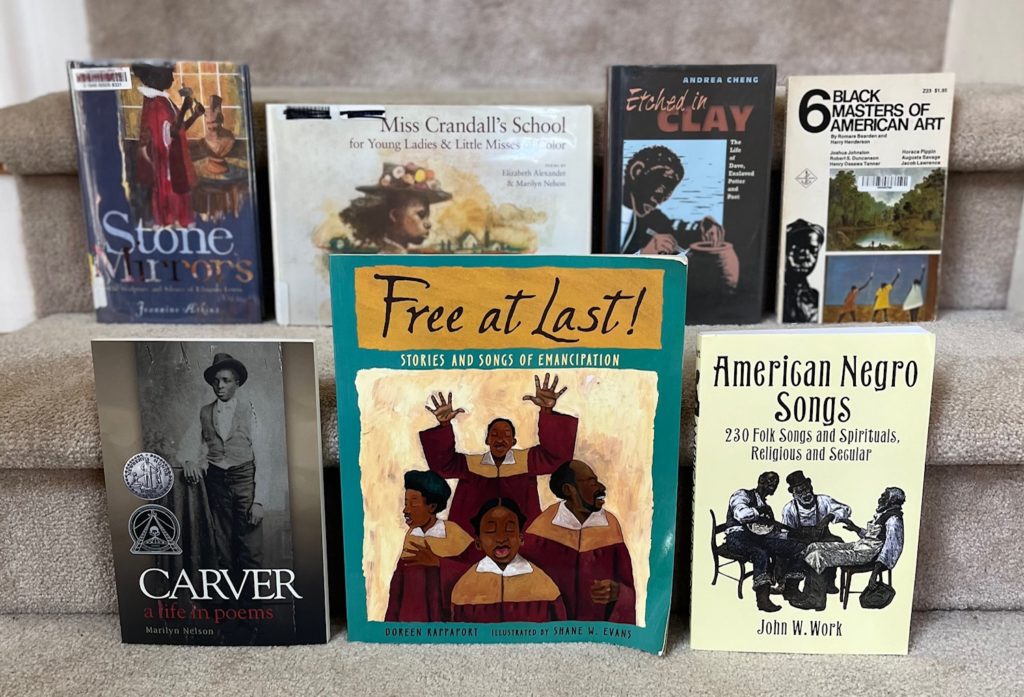
Hymn study
We’ll be using Heritage Hymns. This curated collection of multicultural hymnal studies is available as a free preorder bonus for those who order my book, A Place to Belong, before May 17, 2022.
Folk songs
American Negro Songs: 230 Folk Songs and Spirituals, Religious and Secular by John W. Work will be our main source of folk songs for this time period.
“From joyous gospel to deeply felt blues, this wonderful collection contains vintage songs sung and played through the years by black Americans — at work, in church, and for pure entertainment. Included are spirituals, blues, work songs, and a variety of social and dance songs. This important volume was originally compiled in 1940 by Dr. John W. Work, the noted musicologist affiliated with Fisk University and the celebrated Fisk Jubilee Singers. In it, he discusses the origins and history of black American folk music, the influence of slavery and African cultures, and the lyric significance of such much-loved songs.”
We’ll also cover the songs intermingled with the stories in Free at Last! Stories and Songs of Emancipation by Doreen Rappaport and illustrated by Shane W. Evans.
Also recommended (We’ve used this in past years): Like a Bird: The Art of the American Slave Song by Cynthia Grady.
Composer study
Blind Tom Wiggins (1849-1908) – Along with studying his music, we’ll watch a documentary (Blind Tom: The Last Legal Slave in America), read poems about Blind Tom by Tyehimba Jess, and listen to The Ballad of Blind Tom by Elton John (so random!). We’ll also be reading the picture book Song in a Rainstorm: The Story of Musical Prodigy Thomas “Blind Tom” Wiggins by Glenda Armand.
Samuel Coleridge-Taylor (1875 – 1912) – I haven’t pulled together my resources for studying this composer yet. We studied him briefly years ago, but I want to do a deeper dive this year with a full study. Note: Don’t confuse this Black composer known for his three cantatas on the epic poem Song of Hiawatha by American Henry Wadsworth Longfellow with 19th century English poet Samuel Taylor Coleridge. It’s easy to get them mixed up!
Another option that we enjoyed for this time period: Scott Joplin.
Poetry
Paul Laurence Dunbar – I put together all of my notes for studying Paul Laurence Dunbar in a separate post. He’ll be our main poet for the year.
Historical poetry (various):
Miss Crandall’s School for Young Ladies & Little Misses of Color by Elizabeth Alexander and Marilyn Nelson – I selected this as a companion to The Forbidden Schoolhouse, the nonfiction Black history book we’ll be reading on the topic. “Two renowned poets tell the story of Prudence Crandall and her black students, who endured the cruelty of prejudice and hateful actions for the sake of their education.” The remarkable story of Prudence Crandall’s school is told using the sonnet form of poetry with innovative style. The late Floyd Cooper’s powerful illustrations reveal the strength and vulnerability of Miss Crandall and her students.
Etched in Clay by Andrea Cheng is a book of poetry in which “Andrea Cheng has crafted a biography in verse as beautiful as one of Dave’s jars. In simple, powerful words, including some of Dave’s original writings, we learn his extraordinary story of courage, creative inspiration, and triumph.” We’ll read this alongside Dave the Potter: Artist, Poet, Slave, one of our picture books about slavery and freedom.
Carver: A Life in Poems by Marilyn Nelson – This book matches up with one of my son’s African American biographies for the time period. “Beautiful verse explores agricultural scientist George Washington Carver’s life and many achievements, from his work as a botanist and inventor to his unsung gifts as a painter, musician, and teacher.”
You can find me on Instagram @heritagemomblog. I hope to see you there!
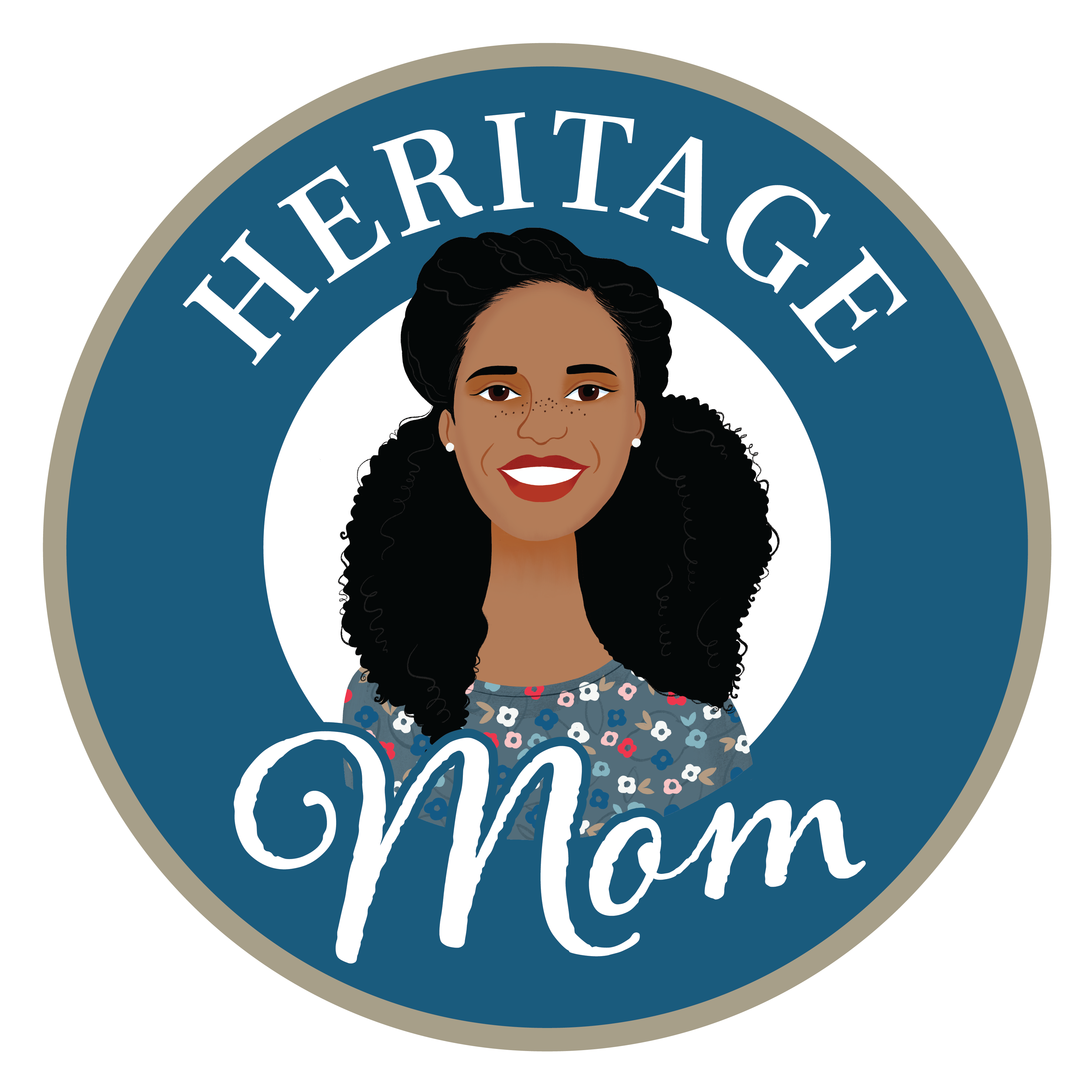










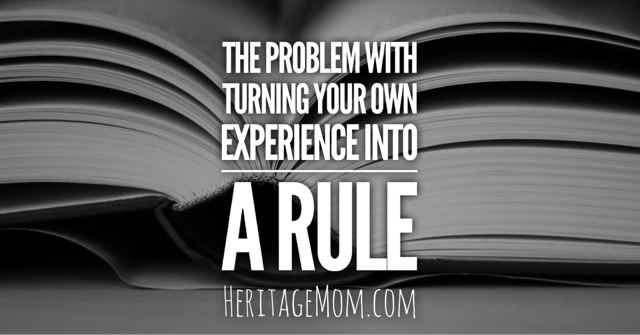
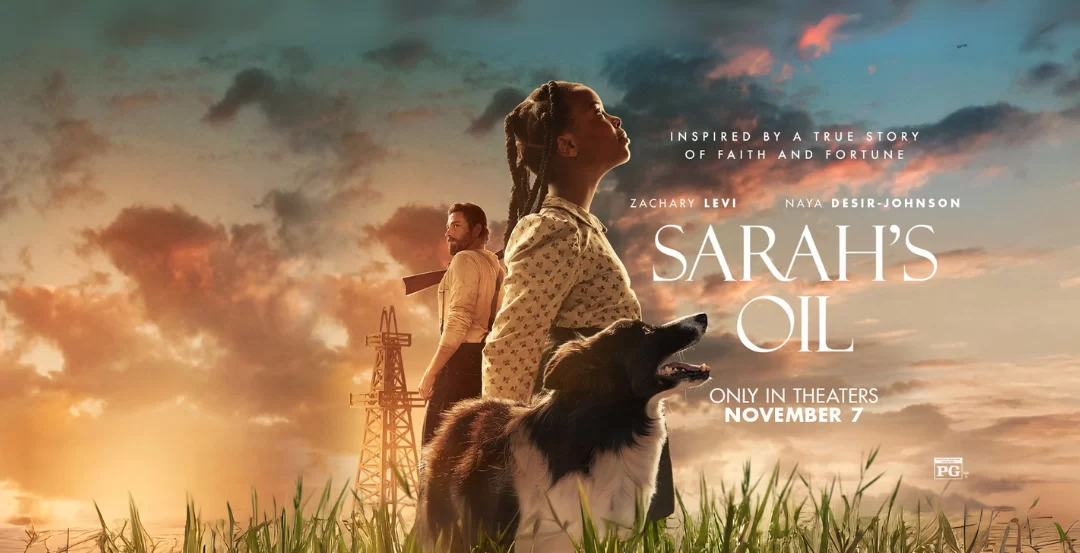

Hi. Thank you for sharing. Did you end up filling out your resources for Samuel Coleridge-Taylor? Would love to cross reference anything I’ve found with what you put together (for our study group).
Hi Jynafer! No, I haven’t even started to work on that yet. It probably won’t be until Term 2 or 3 for us, so please share what you come up with if you get to him before me!